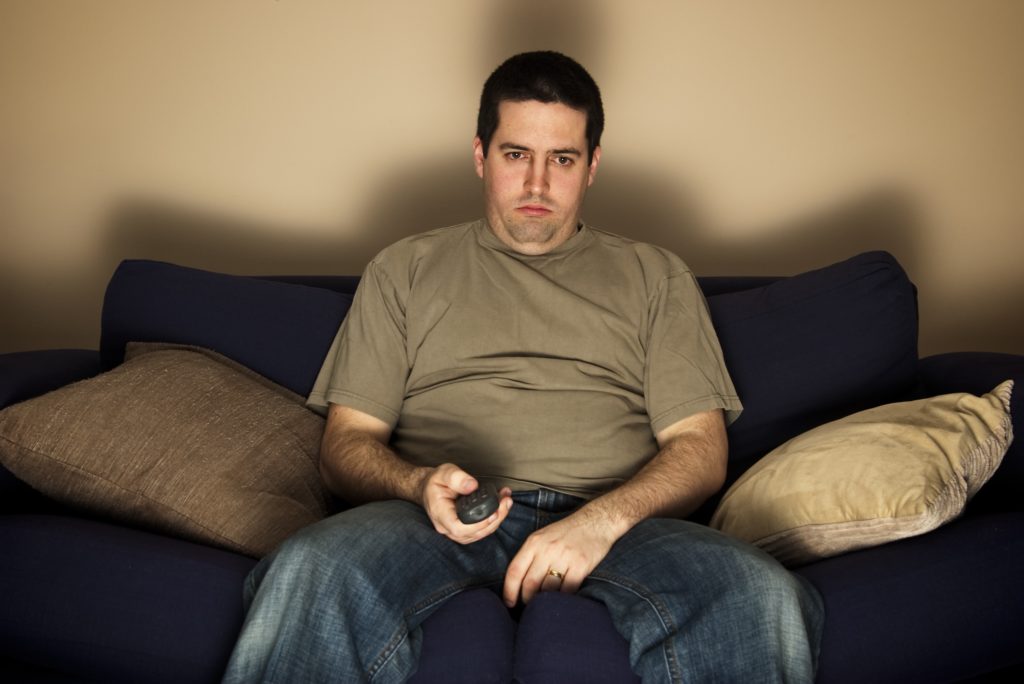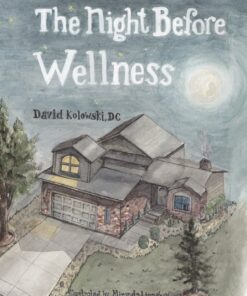“The evidence is overwhelming that physical activity and diet can reduce the risk of developing numerous chronic diseases…and in many cases, in fact, reverse existing disease.”
This quote is from an amazing 2005 article published in the Journal of Applied Physiology titled “Effects of Exercise and Diet on Chronic Disease.” In it, authors Christian Roberts and R. James Barnard compile the common threads from hundreds of other studies and weaves them into a clear and scientifically valid conclusion. I have written on this topic before, and new research continually validates the findings in the paper: everything we put into our bodies either supports health or stimulates disease.
In the United States, we are plagued by chronic diseases. According to the article, heart disease, cancer, and diabetes account for 70 percent of all deaths, while 60 percent of adults are overweight or obese. But these numbers are from 2005, and I am unfortunately not shocked to learn that the CDC reports the current rate of overweight and obese citizens has climbed to 71.6 percent.
The worst part is that over 20 percent of children aged 12–19 are now categorized as obese. This is setting them up for the same chronic diseases, only much earlier in life. We cannot even call type 2 diabetes “adult onset diabetes” anymore because we are now seeing it in children—even in toddlers. This makes me wonder why there is no criminal liability for those who neglect the proper health and feeding of children. Yet ignorance of biological laws is not a crime, and there are plenty of people and corporations that could easily share the blame.
When we see chronic diseases at such high rates, it may be easy to start thinking this is “normal” health. Would you be surprised if I disagree? Just because something is common does not mean it is normal.
Maybe it’s a genetic issue, you ask? Wrong. The human genome has not changed in 10,000 years, yet the rates of these diseases continues to climb. In fact, the articles states that “100% of the increase in the prevalence of Type II Diabetes and Obesity in the United States during the latter half of the 20th century must be attributed to a changing environment interacting with genes, because 0% of the human genome has changed during this time period.”
Genes are activated in response to environmental signals, which tell them to turn on or off. We have genes for healthy physiological functions, and we also have genes that, when expressed, produce adaptive changes that we later label as a disease. So what is it about our environment or lifestyle that is causing such skyrocketing rates of disease—and in the process stripping away millions of years of life and costing trillions of dollars in medical bills?
 And why is it that these conditions are virtually nonexistent in underdeveloped countries? Sadly, our incredible ingenuity has backfired on us. We’ve figured out so many ways to improve our productivity that we can make a living without breaking a sweat. We’ve conquered hunger by producing food-like substances that can sit on the grocery store shelf for years. We’ve developed amazing and glorious shortcuts to life’s labors that allow us to spend more time reveling in the magnificence of our first-world luxuries.
And why is it that these conditions are virtually nonexistent in underdeveloped countries? Sadly, our incredible ingenuity has backfired on us. We’ve figured out so many ways to improve our productivity that we can make a living without breaking a sweat. We’ve conquered hunger by producing food-like substances that can sit on the grocery store shelf for years. We’ve developed amazing and glorious shortcuts to life’s labors that allow us to spend more time reveling in the magnificence of our first-world luxuries.
I’m not calling for a return to a true paleolithic life—I love air conditioning way too much. However, we can start by simply acknowledging a couple of facts: we don’t move as much as we used to, and we don’t eat enough real food anymore because of the advancements I mentioned. In the United States, 55 percent of adults don’t get regular physical activity, and over 75 percent of adults don’t consume five or more fruits and vegetables per day.
The article does a great job of highlighting specific conditions and summarizing the diet or exercise changes that make the most difference. I encourage you to read it for yourself. But beware of the “research trap,” where you see one option and think it will quickly fix everything. Research, especially when it comes to lifestyle factors, is incredibly tricky, and many variables must be taken into account.
For example, think about research into how quitting smoking impacts a person’s health. It would be difficult to measure the effects of this one lifestyle change if the subject still drinks too much alcohol, or is constantly exposed to toxic chemicals, or is smothered in emotional, physical, and financial stress. Without considering these other factors, the data won’t be as meaningful.
Making one change is a good start, but “lifestyle” is a very broad term. We need to consider every part of how we live. We need to acknowledge that the average American lives in a way that promotes disease. And we need to understand that we cannot medicate our way out of a problem that we lived or way into.
When it comes to exercise, plenty of studies show tremendous health benefits from something as simple as walking. Risk of heart disease can be slashed up to 40 percent just by walking 2.5 hours per week, according to the Nurse’s Health Study. We simply need to move more, preferably with some resistance to maintain muscle mass and bone density.
It’s easy enough to move from your bed to your car to your office chair to your couch and then back to bed, but this kind of modern living is robbing us of our health. Seek out a personal trainer who can guide you in proper biomechanics. (You can even find one on YouTube.) Better yet, go see a chiropractor who can ensure your musculoskeletal system and nervous system are tuned up so you function at your best.
For diet, the article highlights dozens of possible beneficial changes. If you don’t know where to start, I suggest the Standard Process 21-Day Purification Program. It walks you through the basics of healthy eating, giving you a firm foundation to carry on past the first 21 days. Along the way, you’ll learn about the benefits of more energy, better sleep, weight loss, and improved bowel and liver functions.
This article is remarkable for several reasons. It is a well-written piece of research that summarizes hundreds of studies and offers a clear conclusion about the power of proper diet and exercise. This kind of research is both time consuming and expensive, yet the authors make no overt sales pitches for a particular procedure or medication. In fact, they sum up their article with this statement: “For a successful public health approach to chronic disease prevention, we cannot rely on pharmaceuticals but must implement long-term, sustainable behaviors that encourage healthy lifestyles.”
Another remarkable thing about this paper is simply that it is old news. Very old. Hippocrates talked at great length about diet and exercise, but perhaps this can be dismissed as anecdotal. Seeing these changes play out over a large population is another thing—but even that is old news!
Dr. Weston A. Price traveled the world in the 1920s and 1930s cataloging the effects of diet on health. He studied traditional cultures and communities and documented how their health declined as they became Westernized. In 1939, he wrote about his findings in his epic work Nutrition and Physical Degeneration. And before him, Sir Robert McCarrison, MD, published his own landmark book on health, Studies in Deficiency Disease, in 1921.
Any way you cut it, the conclusion is clear. We need to live in a way that is more biologically congruent. We need to eat real food, move our bodies, and take personal accountability for our actions. There is no magic pill. There is no government program that will save you. This is simple and straightforward, but it requires your involvement. If you don’t know where to start, find an alternative healthcare practitioner. (Why is the most sensible, safe, and inexpensive option the “alternative”?) We are obviously partial to chiropractic and Nutrition Response Testing as the strategies that provide the greatest results, but you’ll have to see what’s available in your area. Ask a friend or neighbor for a referral. Just get started today.
—David Kolowski, DC
Images from iStock/kwanchaichaiudom (main), DmitryPK (girl doing insulin shot), maytih (empty food labels), dcdp (man on the couch), Daniel Allan (couple walking).




